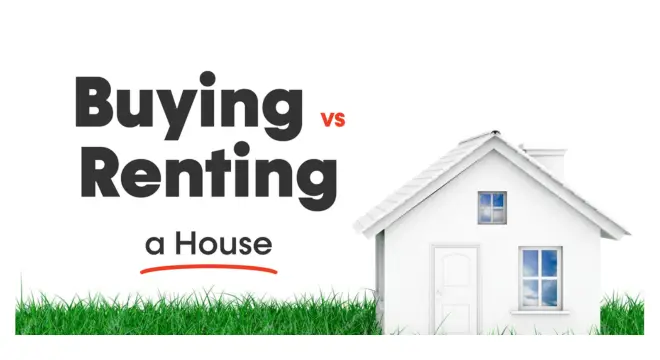Barbara Corcoran Spends $13M on NYC Penthouse, Sells for $12M After Renovations
Let me tell you something — Barbara Corcoran didn’t just buy a penthouse in New York. She bought a feeling. A space she could shape into her version of “I made it.”
Back in the ‘90s, she picked that place not because it was perfect — but because she saw what it could be. And over the years? She poured more than $2 million into renovations. Glass solarium, designer interiors, you name it. Add that to the original $9.5 million price tag — and you’ve got a $13 million dream in the sky.
Now she’s letting it go for $12 million.
Yeah — a million-dollar hit. But honestly, that’s not even the wild part. The real story is what this move says about emotion, timing, and what it really means to “invest” in a home.
You might not have millions riding on your real estate decisions — but if you’ve ever spent months (or years) making a space your own, you get this.
So why sell now? Why the loss? And what can you take from this — so your dream home doesn’t turn into a financial regret?
Let’s get into it.
Have you ever made a big home decision that felt right emotionally but not financially? Let me know.
The Penthouse – A Detailed Look at the ‘Palace in the Sky’
Now let’s talk about the home itself — because this wasn’t your typical NYC apartment with a view.
Barbara’s penthouse was straight-up one of a kind. Perched on the Upper East Side, it had that rare mix of privacy, light, and openness you don’t usually get in Manhattan. And the crown jewel? That glass-wrapped solarium with 360° skyline views. Unreal.
What made this place really special wasn’t just the layout or the square footage — it was how intentional everything felt. Custom finishes, warm tones, a spiral staircase that felt like it belonged in a movie. It looked lived-in but still luxurious.
If you want a peek inside, the full tour is on YouTube — and trust me, it’s worth a few minutes:
Seeing it on video really drives home why it meant so much to her. You can feel the care, the pride. It wasn’t a flip. It was a home.
And that’s what makes the sale so emotional — this wasn’t just brick and glass. It was Barbara’s story.
Renovations and Upgrades – Transforming Vision into Reality
When Barbara bought that penthouse, it wasn’t move-in ready glam. She made it what it became.
She reportedly spent over $2 million renovating the place. That includes everything from structural upgrades to aesthetic details — think imported materials, custom woodwork, and yes, that incredible glass sunroom on the roof.
One major upgrade? She added that rooftop solarium herself. That wasn’t there when she bought it. It completely changed the vibe — turned the penthouse into a quiet escape in the middle of one of the loudest cities on earth.
But renovations at that level don’t just cost money — they cost time, stress, and serious decision-making. Especially when you’re designing for yourself, not for resale.
That’s where many homeowners and even investors slip up. You get emotionally invested in choices that may not pay off later.
Barbara went all in on building a space she loved. And that’s beautiful. But financially? That’s where it gets tricky — and we’ll dig into that in the next section.
Have you ever spent big on a home upgrade just because it felt “right” — and then second-guessed it later?
Financial Analysis – Investment vs. Return

Alright, let’s get into the numbers — because this is where it stings a bit.
Barbara bought that penthouse for $9.5 million. Over the years, she spent another $2 million on renovations. All-in? Roughly $13 million invested.
Now it’s listed for $12 million. Do the math — that’s a $1 million loss, even before taxes, fees, and holding costs.
And look, we’re not talking about some amateur mistake. Barbara knows real estate. This is what she does. But even she couldn’t beat the emotional side of homeownership.
A really good piece by Moneywise broke it down — they pointed out how easy it is to overspend on renovations, especially when you’re upgrading for yourself instead of the next buyer.
It’s a solid reminder that even smart investors can let feelings cloud ROI. You’re not immune just because you know the numbers.
I’ve seen this with regular homeowners too — put in $100K expecting a $150K return, only to get lowballed during resale because the upgrades were “too personal.”
Barbara’s story shows us how fast those lines between lifestyle and investment can blur — and how important it is to set boundaries when spending on a home.
Real question — are you upgrading for your heart, or for your wallet? And is there a middle ground?
What do you think today’s buyers are really looking for — flash, function, or feel? Let me know in the comments. I’d love to hear your take.
Strategic Insights – Lessons from a Real Estate Mogul
Here’s what I love about this story: it’s not just a headline about Barbara selling a penthouse. It’s a masterclass in real estate strategy — and where even the pros have blind spots.
Lesson one, renovate with resale in mind. Always. Doesn’t mean you should build a house you hate living in, but every upgrade should have one eye on future value. Especially in cities like New York, where tastes shift fast and buyers are brutal.
Lesson two, the market doesn’t care what you paid. Just because you spent $2M improving something doesn’t mean buyers will value it the same way. Sentimental ROI isn’t financial ROI.
Lesson three, know when to let go. Barbara didn’t wait around trying to squeeze every last dollar. She listed it smart, timed it right, and got a buyer within 24 hours. That’s experience talking — cut clean, don’t get stuck.
And finally — even for someone as seasoned as Barbara, real estate isn’t just business. It’s personal. And that’s okay. But you’ve got to recognize when emotion starts clouding smart choices.
You and I? We might not be flipping penthouses, but the principles are the same.
So — next time you’re about to drop money on a remodel, ask: would a buyer pay for this, or is it just for me? That one question can save you a lot of regret.
The Next Chapter – Transitioning to a New Home
You know what really stood out to me in all this? Barbara’s why.
She didn’t sell because she needed the money. She sold because — in her words — she “just didn’t want to climb stairs anymore.”
That hit different.
This wasn’t about market timing or flipping for profit. It was about lifestyle. She’s 75 now. Priorities change. What once felt exciting — like a glass-wrapped solarium on the roof — can start to feel like a hassle.
That’s something I think we all forget when talking real estate. It’s not always about equity and ROI. Sometimes it’s just time to move on.
Whether you’re in your 30s, 50s, or beyond, your home needs change. Maybe the space feels too big. Maybe that “forever home” you poured your heart into doesn’t fit your life anymore.
Barbara recognized that early — and acted.
The takeaway? Your dream home should grow with you. And if it doesn’t anymore, it’s okay to let it go.
By the way — I keep a close eye on real estate shifts, personal finance moves, and property stories that actually matter. If you’re into that kind of content, there’s a space where I drop quick insights and updates directly. You can check it out.
Market Implications – What This Sale Signals

Now let’s talk market.
Barbara’s penthouse wasn’t just any listing — it got snatched up within 24 hours of going live. That’s not common, even in a city like New York.
According to CNBC, the listing hit the market at $12 million and found a buyer almost instantly.
That kind of response says something: the luxury market isn’t dead. It’s just selective.
Buyers are still hungry for unique, well-located, well-marketed properties — especially those that feel move-in ready. Barbara’s place checked all those boxes, even if it came with a $12M price tag.
It also shows that pricing smart is better than pricing high. She didn’t overreach. She knew what it was worth in this market, and that confidence paid off.
This isn’t just about Barbara. It’s about what buyers want right now — less fixer-upper, more lifestyle-ready. That’s a trend worth paying attention to.
So if you’re thinking of listing? Focus on the story your home tells — not just the specs. That’s what sells.
If you’re into these kinds of smart property breakdowns — strategy with a human lens — feel free to follow along. I share more real-world stuff like this regularly
Conclusion
Here’s what it all comes down to — owning a home isn’t just about money, and it’s not just about emotion. It’s always both.
Barbara’s story proves that. She didn’t make a perfect financial return. But she lived in that home. Loved it. Built memories in it. And when it stopped serving her, she let it go — gracefully.
Most people either get too attached and overinvest, or they get too cold and miss out on what home really means. The smart move? Learn to walk that line.
If you’re upgrading your place, pause and ask: “Is this for joy, or for value?” Both are valid — but you need to know the difference going in.
And if you’re selling, don’t chase a number that only matters to your ego. The market doesn’t care what you spent. It cares what buyers see and feel today.
Barbara didn’t just sell a penthouse. She made peace with a chapter closing.
You and I? We can do the same when the time comes.
So here’s my question to you: what’s your line between emotion and logic when it comes to your home? Drop a comment. Let’s talk.
Disclaimer: This article is based on publicly available reports, interviews, and property listings. Real estate values, market behavior, and personal circumstances can vary. Always consult a certified financial advisor or licensed real estate professional before making major investment decisions.


